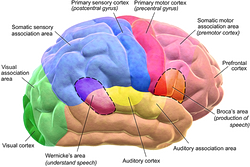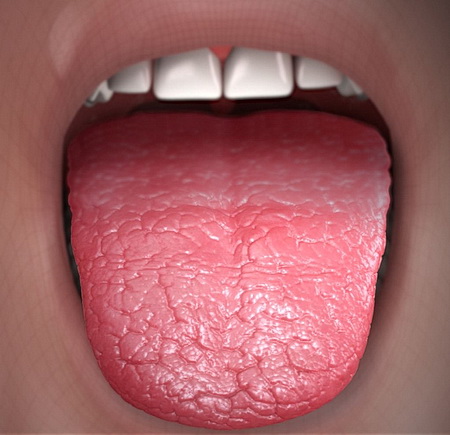Spinal Cord Overview
“Oh my aching back!”. A term uses so much by so many, it becomes almost status quo. But what causes one to feel this pain? Let’s take a look.
The spinal cord is the most integral neural pathway in the human body. It connects the brain with the nervous system which serves as a relay between the brain, spinal cord and rest of the body.
Since it is the central neural pathway, the spinal cord is a collection of nerves. In fact, there are 31 pairs of nerves which originate from the spinal cord and travel to different parts of the body. Through these nerves, the brain sends commands to different muscles and organs and controls their movement. There is another set of nerves which travels from different organs and connect to the spinal cord. These nerves are responsible for bringing in information from the organs to the brain. Examples of such nerves include the nerves travelling from the hands and legs which bring in sensory information.
The spinal cord is protected through a bony column called the spine. The spine is divided into 33 vertebrae which are individual pieces of bones locked together. The vertebrae are divided into five regions namely cervical (7), thoracic (12), lumbar (5), sacrum (5), and coccyx (3-5).
Spinal Cord Injuries
The spinal cord is one of the most sensitive parts of the human body. This is because, once damaged, the spinal cord cannot repair itself. The spinal cord injury can result from a physical trauma such as an accident, fall or slip. It can also be a result of compression of the spinal cord due to the growth of tumor in the body. Another possibility which can result in a spinal cord injury is the loss of normal blood supply to the spinal cord.
In the US, every year, approximately 1,200 new cases of spinal cord injury are reported every year. The condition is more common among young, white males.
There are two types of spinal cord injuries.
-
- Complete spinal cord injury
- Incomplete spinal cord injury
Let’s take a look at each one.
Complete Spinal Cord Injuries
In case of complete spinal cord injury, there is a complete or total loss of sensation and bodily functions in the area below the site of injury. This means that if there is a complete spinal cord injury in the lumbar region of the spine, all muscular functions below that region will be compromised including bowel movement and function of legs. Such a person will not have any sensation or control over his body below the site of injury.
Incomplete Spinal Cord Injuries
In case of an incomplete spinal cord injury, a person can feel some sensation and there is remaining function in and below the affected region. For example, if the thoracic region is injured, in case of incomplete spinal cord injury, the person will still feel the sensation of pain and pressure and there will be muscular function in the region below the thoracic cavity.
Regardless of the type of spinal cord injury, both sides of the body are likely to get affected.
Levels and Implications of Spinal Cord Injury
The implications of spinal cord injury significantly depend upon the type and level of spinal cord injury. As mentioned earlier, the spine is divided into five regions, and the level of spinal cord injury is determined by the region of the spine affected by the injury. Below you will find out about the implications of spinal cord injury depending upon the level.
Cervical Spinal Cord Injury
The cervical region includes the first 7 vertebrae in the neck region. Since it is closest to the brain, spinal cord injuries in the cervical region are most dangerous.
Implications of Cervical Spinal Cord Injury
This level of spinal cord injury is associated with complete or partial loss of sensory or muscular function in the body. Most often, in case of a cervical spinal cord injury, the patient experiences tetraplegia or quadriplegia. This means that all four limbs of the person can get affected to some extent in case of an
The injury of the upper vertebrae of this section is often more dangerous and can result in permanent damage to all four limbs. In case of a more severe injury, this level of spinal cord injury can prove to be fatal. But as you go down the cervical vertebrae, the risk decreases and often the injury is incomplete.
Thoracic Spinal Cord Injury
The thoracic spine includes 12 vertebrae which are numbered as T-1 to T-12. This section of the spine is basically the upper, and middle part of the back. The main function of this section of the spine is to ensure that you stay upright and maintain the right posture while sitting and standing. The nerves passing through these vertebrae control the movement of muscles in the upper chest including the muscles of the rib cage and diaphragm. They also include abdominal muscles and muscles of the upper back.
Implications of Thoracic Spinal Cord Injury
Injuries in the thoracic section of the spinal cord generally affect the lower part of the body. In the case of a thoracic spinal cord injury, the lower limbs of the person get affected. The bowel and bladder control is also compromised but usually, the arms and hands continue to function normally.
Lumbar Spinal Cord Injuries
The lumbar portion is the lowest and most important part of the spinal cord. It comprises five vertebrae. The vertebrae of this region are larger than the vertebrae of all other regions of the spine therefore this section carries the most weight of the spine.
Implications of Lumbar Spinal Cord Injuries
In the case of lumbar spine injuries, a person may experience complete or partial loss of function in the hips, legs, bladder and bowel control. It can also affect functions such as bending of the knees and foot.
Sacral Spinal Cord Injuries
This section of the spine is right above the tailbone which is known as the coccyx. The nerves of this region affect the function of the hips, pelvic organs, and reproductive organs.
Implications of Sacral Spinal Cord Injuries
Injuries in this section of the spinal cord result in loss of function in the hips and organs of the pelvic region including bladder and reproductive organs.
Conclusion
A spinal cord injury is dangerous because it can disrupt the communication process between the brain and the rest of the body. Physical trauma, compression due to a tumor, or loss of blood supply to the spinal cord can all lead to spinal cord injuries. There can be complete or incomplete spinal cord injuries which are based on the extent to which motor and sensory reflexes of a person are affected. Regardless of the type, if you look at the general implications of spinal cord injury, you will notice some of the following effects.
-
- Loss or reduced mobility,
- Changes in sensation,
- Modified sexual function,
- Loss of bladder or bowel control and or,
- Intensified reflex actions or increased frequency of spasms.




















 Meditate or download apps on your phone to help you relax. Take deep breaths as much as possible and think that everyone is in this crisis together, so you need to stay strong. Destressing is critical if you want to control your anxiety levels.
Meditate or download apps on your phone to help you relax. Take deep breaths as much as possible and think that everyone is in this crisis together, so you need to stay strong. Destressing is critical if you want to control your anxiety levels. 